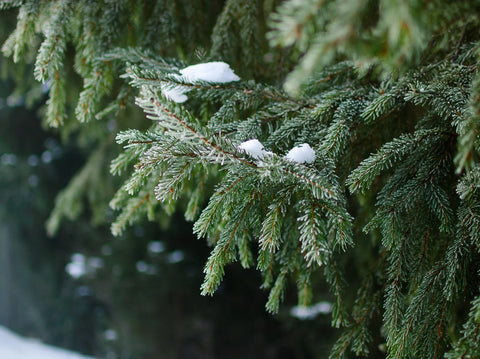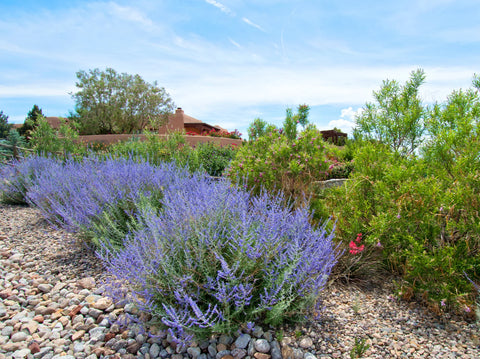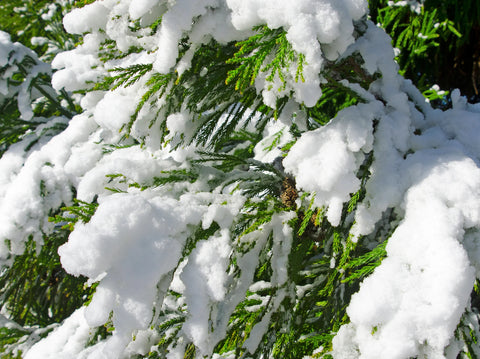Winter doesn't mean your gardening efforts have to freeze! Choosing the right trees to plant during the colder months can lead to a flourishing garden when warmer weather returns. Let's dive into specific trees that are ideal for winter planting in various USDA grow zones.
Guide to Choosing the Right Trees for Winter Planting by Grow Zone
Trees for Zones 1-3: Braving the Cold
In these chillier climates, the focus is on hardy trees that can withstand extreme cold.
Evergreens:
- Colorado Blue Spruce (Picea pungens): Known for its striking blue foliage and resilience in cold weather.
- Alberta Spruce: Known for its compact, conical shape and dense, fine-textured foliage, the Alberta Spruce is a slow-growing dwarf variety that can withstand the cold.
- Baby Blue Spruce: Similar to the Colorado Blue Spruce but with a more vibrant blue hue and a compact growth habit, the Baby Blue Spruce is also adapted to cold climates.
Deciduous:
-
Princeton American Elm Tree (Ulmus americana 'Princeton'): Well-suited for winter planting in colder climates due to its exceptional cold hardiness and robust nature. Its ability to establish strong root systems even in cooler temperatures makes it a reliable choice for landscaping in zones 1-3, ensuring a swift recovery and vigorous growth as the weather warms.
Trees for Zones 4-7: Winter Planting Wonders
These zones offer a greater variety of trees that can be planted in winter, including both evergreen and deciduous options.
Evergreens:
-
Horstmann Blue Atlas Cedar (Cedrus atlantica 'Horstmann'): This is a compact variety of the Blue Atlas Cedar, known for its striking silvery-blue needles and a semi-dwarf, irregular growth habit. It's well-suited for zones 6-7, where it can be planted in winter as long as the ground isn't frozen.
-
Leyland Cypress (x Cupressocyparis leylandii): Suitable for zones 6-10, it can be planted in winter in these zones. It's a fast-growing evergreen commonly used for privacy screens.
-
Taylor Juniper (Juniperus virginiana 'Taylor'): Hardy in USDA zones 3-9. It can be planted in winter, especially in the warmer part of its zone range (zones 6-9). In zones 3-5, late winter or early spring planting is preferable.
-
Blue Arrow Juniper (Juniperus scopulorum 'Blue Arrow'): Suitable for USDA zones 4-8. This variety can be planted in winter in zones 6-8. In zones 4-5, late winter or early spring is a better time to avoid extreme cold stress.
Deciduous:
- Autumn Blaze Red Maple (Acer rubrum): Famous for its vibrant red color in fall, it’s a robust tree that can handle winter planting.
- Bald Cypress (Taxodium distichum): Hardy in zones 4-10, the Bald Cypress can be planted in winter in zones 6-10. It's a deciduous conifer, losing its needles in winter, which makes it adaptable to colder conditions.
- Red Sunset Maple (Acer rubrum): Famous for its vibrant red color in fall, it’s a robust tree that can handle winter planting.
Trees for Zones 8-10: Embracing a Milder Winter
These warmer zones allow for a wider variety of trees to be planted in winter, from citrus to classic oaks.
Evergreens:
- Live Oak (Quercus virginiana): A large, stately tree that’s a staple in southern landscapes.
- Southern Magnolia (Magnolia grandiflora): Renowned for its large, fragrant white flowers and glossy leaves.
- Italian Cypress (Cupressus sempervirens): Best suited for warmer climates (zones 7-10), it can be planted in winter in these zones, especially in areas with mild winters.
Deciduous and Fruit Trees:
- Citrus Trees (Citrus spp.): Including oranges, lemons, and limes, ideal for these warmer climates.
- Crape Myrtle (Lagerstroemia): Known for its beautiful summer blooms and smooth, peeling bark.
- Palo Verde (Parkinsonia spp.): A desert native, perfect for adding a splash of green to arid landscapes.
Winter Planting Tips
Regardless of your zone, remember these key tips:
- Ensure the soil is not frozen when planting.
- Water the trees well after planting and mulch to conserve moisture.
- Provide protection from harsh winter winds for newly planted trees.
Wrap-Up: Winter Planting Success
Selecting the right trees for your specific grow zone and following winter care guidelines can lead to a thriving garden. With a bit of planning, you can enjoy the benefits of gardening year-round.
For a selection of trees perfect for your grow zone and more gardening insights, visit Simply Trees. We're here to help you choose and care for the best trees for your garden, in any season. Let's embrace winter gardening together!



